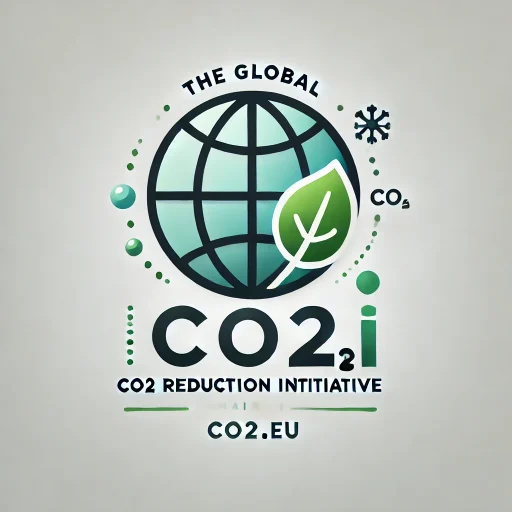
November 17, 2025 to November 23, 2025
Carbon Reduction Activities in Europe: November 17-23, 2025
Executive Summary: The European Union continues to advance its climate agenda with new initiatives aimed at reducing carbon emissions. Recent developments include the finalization of the 2040 emissions reduction target, discussions on the expansion of the emissions trading system, and the integration of international carbon credits. These efforts are part of the EU’s broader strategy to achieve climate neutrality by 2050.
Introduction
During the week of November 17-23, 2025, the European Union (EU) announced several key initiatives as part of its ongoing efforts to reduce carbon emissions and achieve climate neutrality by 2050. These activities are crucial in the context of the upcoming COP30 climate summit, where the EU aims to demonstrate its leadership in global climate action.
Key Developments
1. Finalization of the 2040 Emissions Reduction Target
The EU has finalized its emissions reduction target for 2040, aiming for a 90% reduction in net greenhouse gas emissions from 1990 levels. This ambitious target is part of the EU’s broader strategy to combat climate change and align with international commitments under the Paris Agreement.
2. Expansion of the Emissions Trading System (ETS)
Discussions continued regarding the expansion of the EU’s Emissions Trading System (ETS). The focus is on incorporating more sectors into the ETS and enhancing its effectiveness as a tool for reducing carbon emissions across the continent.
3. Integration of International Carbon Credits
The EU is exploring the integration of international carbon credits into its climate strategy. This move aims to provide flexibility in achieving emissions reduction targets while ensuring that the EU’s climate commitments remain robust and credible.
Conclusion
The announcements made during this period reflect the EU’s ongoing commitment to reducing carbon emissions and achieving climate neutrality by 2050. By setting a new climate target for 2040 and incorporating carbon credits, the EU is taking significant steps towards a sustainable and competitive low-carbon economy. These initiatives are expected to enhance Europe’s resilience to climate change and support the global effort to mitigate its impacts.
Sources

November 10, 2025 to November 16, 2025
Carbon Reduction Activities in Europe: November 10-16, 2025
Executive Summary: The European Union continues to advance its climate agenda with new initiatives aimed at reducing carbon emissions. Recent developments include the finalization of the 2040 emissions reduction target, discussions on the expansion of the emissions trading system, and the integration of international carbon credits. These efforts are part of the EU’s broader strategy to achieve climate neutrality by 2050.
Introduction
During the week of November 10-16, 2025, the European Union (EU) announced several key initiatives as part of its ongoing efforts to reduce carbon emissions and achieve climate neutrality by 2050. These activities are crucial in the context of the upcoming COP30 climate summit, where the EU aims to demonstrate its leadership in global climate action.
Finalization of the 2040 Emissions Reduction Target
The European Parliament approved a proposal to reduce greenhouse gas emissions by 90% by 2040 compared to 1990 levels. This decision marks a significant step towards the EU’s 2050 net-zero goal. However, the agreement includes flexibilities such as the use of high-quality international carbon credits, which some environmental groups argue could undermine the effectiveness of the target. The measure will now proceed to final negotiations with member states before being adopted into law.
Source: Carbon Herald
Expansion of the Emissions Trading System
Discussions continued regarding the expansion of the EU’s emissions trading system (ETS) to cover additional sectors such as buildings and road transport. Originally planned for 2026, the expansion has been delayed to 2028. This delay is part of a broader compromise to balance economic considerations with environmental goals.
Source: Carbon Herald
Integration of International Carbon Credits
From 2036 onward, up to 5% of the emissions reduction target may be met through high-quality international carbon credits. This increase from the initially proposed 3% is intended to provide flexibility in achieving the 2040 target. However, it has raised concerns among environmental advocates about the potential for credits to replace genuine domestic emissions reductions.
Source: Carbon Herald
Conclusion
The announcements made during this period reflect the EU’s ongoing commitment to reducing carbon emissions and achieving climate neutrality by 2050. While the new initiatives demonstrate significant progress, the inclusion of flexibilities such as international carbon credits highlights the challenges of balancing ambitious climate goals with economic and political realities. As the EU prepares for the COP30 summit, these developments will be closely watched by the international community.

November 03, 2025 to November 09, 2025
EU Carbon Reduction Activities: November 2025
Executive Summary: The European Union has reaffirmed its commitment to reducing carbon emissions by 90% by 2040, with a focus on balancing economic competitiveness and environmental responsibilities. Internal disagreements have delayed binding commitments, but the EU is working to finalize its climate strategy ahead of the COP30 summit. The use of carbon credits and the need for a just transition remain key points of contention.
Introduction
In early November 2025, the European Union (EU) continued its efforts to negotiate and finalize its climate targets, aiming for a 90% reduction in carbon emissions by 2040. These discussions are critical as the EU prepares for the upcoming United Nations COP30 climate summit in Belém, Brazil. This report provides an overview of the key developments and challenges faced by the EU in setting its climate goals during this period.
2040 Emissions Reduction Target
The EU has set an ambitious target to cut carbon emissions by 90% by 2040 compared to 1990 levels. However, internal divisions among member states have delayed the agreement on binding targets. A non-binding interim goal of reducing emissions by 66.25% to 72.5% by 2035 has been proposed, which some argue falls short of the Paris Agreement obligations. The main disputes involve the use of carbon credits and carbon sinks.
Source: CO2i.eu
Challenges and Negotiations
Countries like Poland and the Czech Republic have expressed concerns over the achievability of the 90% target, citing economic competitiveness as a major issue. This has led to delays in submitting the 2035 emissions reduction plan to the UN. The EU is still working to present a viable plan at COP30.
Source: Clean Energy Wire
Use of Carbon Credits
EU member state environment ministers have decided to stick to the 90% target but proposed broader flexibilities, which would further weaken the original proposal. They made these adjustments to reflect concerns about the EU’s competitiveness, the need for a just and socially balanced transition, and uncertainty related to natural removals. EU governments aim to use international carbon credits for up to 5% of 1990 net emissions, effectively bringing the target down to 85+x% of domestic emissions reductions.
Source: Clean Energy Wire
Conclusion
The EU’s commitment to a 90% emissions reduction by 2040 is a significant step towards addressing climate change. However, internal disagreements and the reliance on carbon credits pose challenges to achieving these goals. As the EU prepares for COP30, it must finalize its climate strategy to ensure a balanced approach that considers both economic and environmental responsibilities.
References

October 27, 2025 to November 02, 2025
EU Carbon Reduction Activities: Late October to Early November 2025
Executive Summary: The European Union is actively negotiating its climate targets, aiming for a 90% reduction in carbon emissions by 2040. Internal disagreements, particularly over economic competitiveness and carbon credits, have delayed binding commitments. The EU is working to finalize its climate strategy ahead of the COP30 summit, with a focus on balancing industrial growth and environmental responsibilities.
Introduction
In the period between October 27, 2025, and November 02, 2025, the European Union (EU) has been engaged in intensive discussions and negotiations regarding its carbon reduction targets. These activities are crucial as the EU prepares for the upcoming United Nations COP30 climate summit. This report provides a detailed overview of the key developments and challenges faced by the EU in setting its climate goals.
Key Developments
2040 Emissions Reduction Target
The EU aims to cut carbon emissions by 90% by 2040 compared to 1990 levels. However, internal divisions among member states have delayed the agreement on binding targets. A non-binding interim goal of reducing emissions by 66.25% to 72.5% has been proposed, which falls short of the Paris Agreement obligations. The main disputes involve the use of carbon credits and carbon sinks. (Phys.org)
Challenges and Negotiations
Countries like Poland and the Czech Republic have expressed concerns over the achievability of the 90% target, citing economic competitiveness as a major issue. This has led to delays in submitting the 2035 emissions reduction plan to the UN. The EU is still working to present a viable plan at COP30. (Phys.org)
Forest CO2 Absorption and Target Adjustments
Recent drafts have shown that the EU is considering revising its 2040 target due to decreased CO2 absorption by forests, primarily caused by wildfires and inefficient management. There is a proposal to adjust the target if forest and land-based activities fail to meet expectations. This includes potential measures to enhance the forest sector’s contribution to emission goals. (Energy News)
Industrial and Economic Considerations
The European Commission has introduced the Clean Industrial Deal, which includes strategies like the Clean Energy Investment Strategy and the Industrial Accelerator Act. These initiatives aim to balance climate goals with industrial competitiveness. However, there are concerns about the potential dilution of existing climate laws to accommodate economic interests. (Clean Energy Wire)
Conclusion
The EU is at a critical juncture in its climate policy, facing the challenge of aligning ambitious environmental targets with economic realities. The upcoming COP30 summit serves as a deadline for the EU to finalize its climate commitments. The outcome of these negotiations will significantly impact the EU’s role as a leader in global climate action.
Sources

October 20, 2025 to October 26, 2025
Carbon Reduction Activities in Europe: October 20-26, 2025
Executive Summary: Recent developments in European carbon reduction initiatives underscore the EU’s commitment to achieving its climate goals. Key activities include the advancement of carbon removal technologies, regulatory updates in the maritime sector, and strategic investments in industrial decarbonization. These efforts are crucial for aligning with the Paris Agreement’s targets and ensuring a sustainable future.
1. Advancements in Carbon Removal Technologies
During the week of October 20-26, 2025, significant progress was made in the field of carbon removal technologies across Europe. The European Commission announced new funding initiatives aimed at accelerating the deployment of Direct Air Carbon Capture and Storage (DACCS) and Bioenergy with Carbon Capture and Storage (BECCS) technologies. These initiatives are part of the broader strategy to achieve net-zero emissions by 2050, as outlined in the European Green Deal.
Sources: Carbon Gap Policy Tracker
2. Regulatory Updates in the Maritime Sector
The European Union has introduced new regulations to further decarbonize the maritime sector. The updated FuelEU Maritime Regulation mandates a gradual reduction in the greenhouse gas intensity of fuels used by ships. This regulation is a critical component of the EU’s strategy to reduce transport emissions by 90% by 2050.
Sources: CO2i Weekly News
3. Strategic Investments in Industrial Decarbonization
The European Commission has also announced increased investments in industrial decarbonization. These investments are aimed at supporting energy-intensive industries in transitioning to cleaner technologies. The focus is on enhancing the competitiveness of European industries while ensuring compliance with the EU’s climate targets.
Sources: One Click LCA
Conclusion
The carbon reduction activities announced in late October 2025 reflect Europe’s ongoing commitment to tackling climate change. By advancing carbon removal technologies, updating maritime regulations, and investing in industrial decarbonization, the EU is taking significant steps towards achieving its climate goals and ensuring a sustainable future.

October 13, 2025 to October 19, 2025
Carbon Reduction Activities in Europe: October 13-19, 2025
Executive Summary: Recent developments in Europe’s carbon reduction efforts include the EU’s commitment to a significant greenhouse gas emissions reduction target by 2035, the introduction of a new measure to address carbon leakage risks, and the launch of a public consultation on the Carbon Border Adjustment Mechanism (CBAM). These initiatives reflect Europe’s ongoing dedication to achieving climate neutrality and enhancing its regulatory frameworks to support sustainable practices.
Introduction
Between October 13 and October 19, 2025, several significant carbon reduction activities were announced in Europe. These initiatives are part of the broader effort to achieve climate neutrality by 2050 and to enhance the regulatory frameworks supporting carbon reduction and sustainability.
EU’s Greenhouse Gas Emissions Reduction Target
The European Union has reaffirmed its commitment to the Paris Agreement by announcing its intention to submit a post-2030 Nationally Determined Contribution (NDC) ahead of COP30. The EU aims to reduce greenhouse gas emissions by 66.25% to 72.5% by 2035 compared to 1990 levels. This ambitious target underscores the EU’s dedication to leading global efforts in combating climate change. (Source)
Carbon Border Adjustment Mechanism (CBAM)
The European Commission has launched a call for evidence to gather stakeholder opinions on the rules for calculating emissions embedded in CBAM goods. This initiative aims to address the risk of carbon leakage for EU-produced goods in CBAM sectors. The Commission is also considering extending the scope to specific downstream products and implementing anti-circumvention measures. These efforts are part of the EU’s strategy to simplify and strengthen the CBAM. (Source)
Public Consultation on CBAM
A public consultation has been launched to discuss the scope extension of the CBAM to include specific downstream products and to address anti-circumvention measures. This consultation is crucial for refining the CBAM’s implementation and ensuring it effectively mitigates carbon leakage while supporting the EU’s climate goals. (Source)
Conclusion
The announcements made between October 13 and October 19, 2025, highlight Europe’s proactive approach to carbon reduction and climate change mitigation. By setting ambitious emissions reduction targets and refining regulatory mechanisms like the CBAM, the EU continues to position itself as a leader in global climate action.
References

October 06, 2025 to October 12, 2025
Carbon Reduction Activities in Europe: October 2025
Executive Summary: The European Union is advancing its climate agenda with significant policy developments aimed at reducing carbon emissions. Key initiatives include setting ambitious climate targets for 2035 and 2040, incorporating carbon credits, and enhancing measures in the transport sector. These efforts are part of a broader strategy to achieve climate neutrality by 2050.
Introduction
In October 2025, the European Union (EU) continued to make strides in its climate policy, focusing on carbon reduction activities. These initiatives are integral to the EU’s strategy to achieve climate neutrality by 2050, as outlined in the European Green Deal and the European Climate Law. This report provides a comprehensive overview of these activities, highlighting key developments and their implications for Europe’s climate action strategy.
Key Developments
1. New Climate Target for 2040
On July 2, 2025, the European Commission proposed a legally binding climate target to cut net greenhouse gas emissions by 90% by 2040 from 1990 levels. This target is a critical step towards achieving climate neutrality by 2050. The proposal includes the use of carbon credits, allowing member states to meet a limited portion of their emissions offsetting target through credits purchased from developing nations. This flexibility is planned to be phased in from 2036 through a United Nations-backed market, covering up to 3% of the 2040 goal. (Source)
2. Debate on Carbon Credits
The inclusion of carbon credits in the 2040 target has sparked debate among environmental groups and policymakers. While some view it as a pragmatic approach to achieving emissions reductions, others argue it could undermine domestic efforts. The EU aims to balance domestic emission reductions with international carbon credits to achieve its climate goals. (Source)
3. Strengthening Transport Sector Measures
The transport sector is a significant focus for achieving the 2040 target, as it is projected to account for about 45% of EU emissions in 2030. The EU is urged to maintain its ambitious targets for zero-emission vehicles and green fuels for ships and planes. Additionally, there is a call for the electrification of corporate fleets and the inclusion of non-CO₂ aviation effects in climate policy. (Source)
Conclusion
The announcements made in early October 2025 reflect the EU’s ongoing commitment to reducing carbon emissions and achieving climate neutrality by 2050. By setting a new climate target for 2040 and incorporating carbon credits, the EU is taking significant steps towards a sustainable and competitive low-carbon economy. These initiatives are expected to enhance Europe’s resilience to climate change and support the global effort to mitigate its impacts.
References

September 29, 2025 to October 05, 2025
Carbon Reduction Activities in Europe: Late September to Early October 2025
Executive Summary: The European Union continues to advance its climate agenda with significant announcements aimed at reducing carbon emissions. The focus remains on achieving climate neutrality by 2050, with a new target set for 2040 to cut emissions by 90% from 1990 levels. These initiatives are part of a broader strategy to enhance sustainability and competitiveness across Europe.
Introduction
In the period from September 29 to October 5, 2025, the European Union (EU) made significant strides in its climate policy, focusing on carbon reduction activities. These announcements are integral to the EU’s strategy to achieve climate neutrality by 2050, as outlined in the European Green Deal and the European Climate Law. This report provides a comprehensive overview of these activities, highlighting key developments and their implications for Europe’s climate action strategy.
Key Developments
1. New Climate Target for 2040
On July 2, 2025, the European Commission proposed a legally binding climate target to cut net greenhouse gas emissions by 90% by 2040 from 1990 levels. This target is a critical step towards achieving climate neutrality by 2050. The proposal includes the use of carbon credits, allowing member states to meet a limited portion of their emissions offsetting target through credits purchased from developing nations. This flexibility is planned to be phased in from 2036 through a United Nations-backed market, covering up to 3% of the 2040 goal.
Sources: CO2i.eu, Clean Energy Wire
2. Debate on Carbon Credits
The inclusion of carbon credits in the 2040 target has sparked debate among environmental groups and policymakers. While some view it as a pragmatic approach to achieving emissions reductions, others argue it could undermine domestic efforts. The EU aims to balance domestic emission reductions with international carbon credits to achieve its climate goals.
Sources: CO2i.eu, Clean Energy Wire
3. Strengthening Transport Sector Measures
The transport sector is a significant focus for achieving the 2040 target, as it is projected to account for about 45% of EU emissions in 2030. The EU is urged to maintain its ambitious targets for zero-emission vehicles and green fuels for ships and planes. Additionally, there is a call for the electrification of corporate fleets and the inclusion of non-CO₂ aviation effects in climate policy.
Sources: CO2i.eu, Clean Energy Wire
Conclusion
The announcements made in late September and early October 2025 reflect the EU’s ongoing commitment to reducing carbon emissions and achieving climate neutrality by 2050. By setting a new climate target for 2040 and incorporating carbon credits, the EU is taking significant steps towards a sustainable and competitive low-carbon economy. These initiatives are expected to enhance Europe’s resilience to climate change and support the global effort to mitigate its impacts.
References

September 22, 2025 to September 28, 2025
Carbon Reduction Activities in Europe: September 22-28, 2025
Executive Summary: During the week of September 22-28, 2025, the European Union made significant strides in its carbon reduction efforts. The EU agreed on a provisional emissions reduction target for 2035, aiming for a 66.25%–72.5% cut from 1990 levels. Additionally, discussions continued regarding the 2040 climate target, with a focus on achieving a 90% reduction in net greenhouse gas emissions.
Introduction
In late September 2025, the European Union (EU) engaged in several key activities aimed at advancing its carbon reduction goals. These activities were part of the EU’s broader strategy to combat climate change and align with international commitments under the Paris Agreement.
2035 Emissions Reduction Target
On September 25, 2025, the EU reached a provisional agreement on an emissions reduction target for 2035. The target aims for a reduction of 66.25% to 72.5% from 1990 levels. This agreement was crucial to avoid missing a United Nations deadline and to maintain the EU’s reputation as a leader in climate action. However, the target lacks binding commitments and detailed plans, reflecting ongoing internal divisions among member states regarding the level of ambition. Some countries, such as Denmark, Spain, Luxembourg, and the Netherlands, advocated for the higher end of the target range, while others, including Poland, Italy, the Czech Republic, and Hungary, preferred a more conservative approach.
Source: Phys.org
2040 Climate Target Discussions
During this period, discussions continued regarding the EU’s proposed 2040 climate target. The European Commission had previously proposed a 90% reduction in net greenhouse gas emissions by 2040 compared to 1990 levels. This proposal includes several flexibilities, such as the use of international carbon credits and domestic carbon removals, to accommodate member states’ varying economic and political contexts. The proposal aims to provide predictability and stability for investors and businesses, both within and outside the EU, as part of the clean energy transition.
Source: E3G
Challenges and Reactions
The inclusion of flexibilities in the 2040 target has been met with mixed reactions. Environmental organizations have expressed concerns that these flexibilities could weaken the target, particularly the use of international carbon credits. They emphasize the need for strict criteria to ensure the integrity of these credits. Conversely, some think tanks have praised the proposal for sending a strong signal internationally, highlighting the feasibility of combining economic prosperity with a just transition away from fossil fuels.
Source: Clean Energy Wire
Conclusion
The activities and discussions during this week underscore the EU’s ongoing commitment to its decarbonization agenda. While challenges remain, particularly in achieving consensus among member states, the EU continues to play a pivotal role in global climate leadership. The outcomes of these discussions will be critical as the EU prepares for the upcoming COP30 conference and seeks to influence other major emitters to enhance their climate ambitions.

September 15, 2025 to September 21, 2025
Carbon Reduction Activities in Europe: September 15-21, 2025
Executive Summary: The European Union continues to advance its climate action strategy by setting ambitious targets and exploring flexible mechanisms. Recent initiatives focus on balancing environmental sustainability with economic growth, ensuring a resilient and competitive future for Europe. These efforts are part of the EU’s broader strategy to achieve climate neutrality by 2050.
Introduction
In mid-September 2025, the European Union (EU) made significant announcements regarding its climate policy, focusing on carbon reduction activities. These announcements are integral to the EU’s strategy to achieve climate neutrality by 2050, as outlined in the European Green Deal and the European Climate Law. This report provides a comprehensive overview of these activities, highlighting key developments and their implications for Europe’s climate action strategy.
Key Developments
1. New Climate Target for 2040
On July 2, 2025, the European Commission proposed a legally binding climate target to cut net greenhouse gas emissions by 90% by 2040 from 1990 levels. This target is a critical step towards achieving climate neutrality by 2050. The proposal includes the use of carbon credits, allowing member states to meet a limited portion of their emissions offsetting target through credits purchased from developing nations. This flexibility is planned to be phased in from 2036 through a United Nations-backed market, covering up to 3% of the 2040 goal.
2. Debate on Carbon Credits
The inclusion of carbon credits in the 2040 target has sparked debate among environmental groups and policymakers. While some view it as a pragmatic approach to achieving emissions reductions, others argue it could undermine domestic efforts. The EU aims to balance domestic emission reductions with international carbon credits to achieve its climate goals.
3. Strengthening Transport Sector Measures
The transport sector is a significant focus for achieving the 2040 target, as it is projected to account for about 45% of EU emissions in 2030. The EU is urged to maintain its ambitious targets for zero-emission vehicles and green fuels for ships and planes. Additionally, there is a call for the electrification of corporate fleets and the inclusion of non-CO₂ aviation effects in climate policy.
Sources: CO2i.eu, Cleary Gottlieb
Conclusion
The announcements made in mid-September 2025 reflect the EU’s ongoing commitment to reducing carbon emissions and achieving climate neutrality by 2050. By setting a new climate target for 2040 and incorporating carbon credits, the EU is taking significant steps towards a sustainable and competitive low-carbon economy. These initiatives are expected to enhance Europe’s resilience to climate change and support the global effort to mitigate its impacts.
